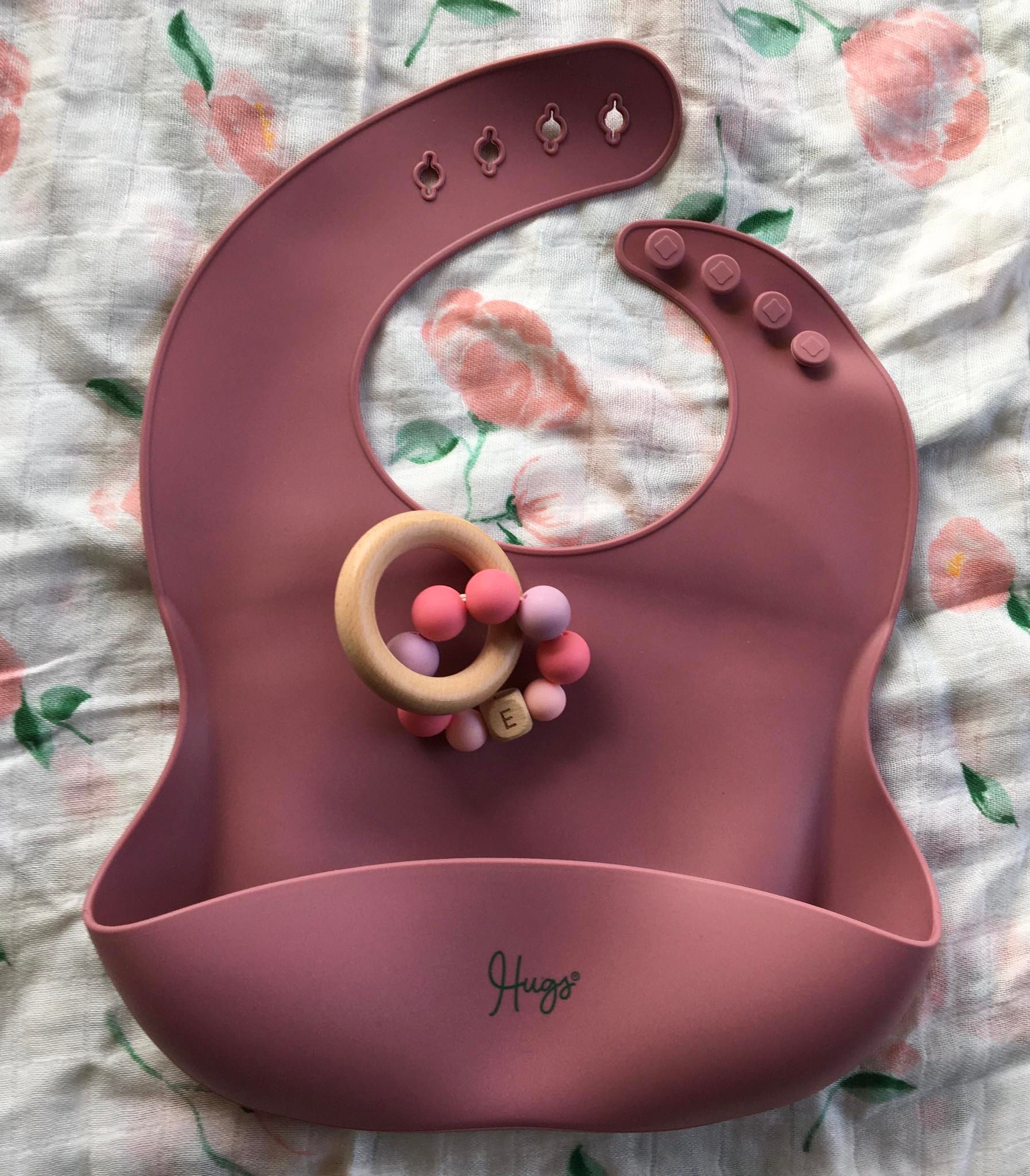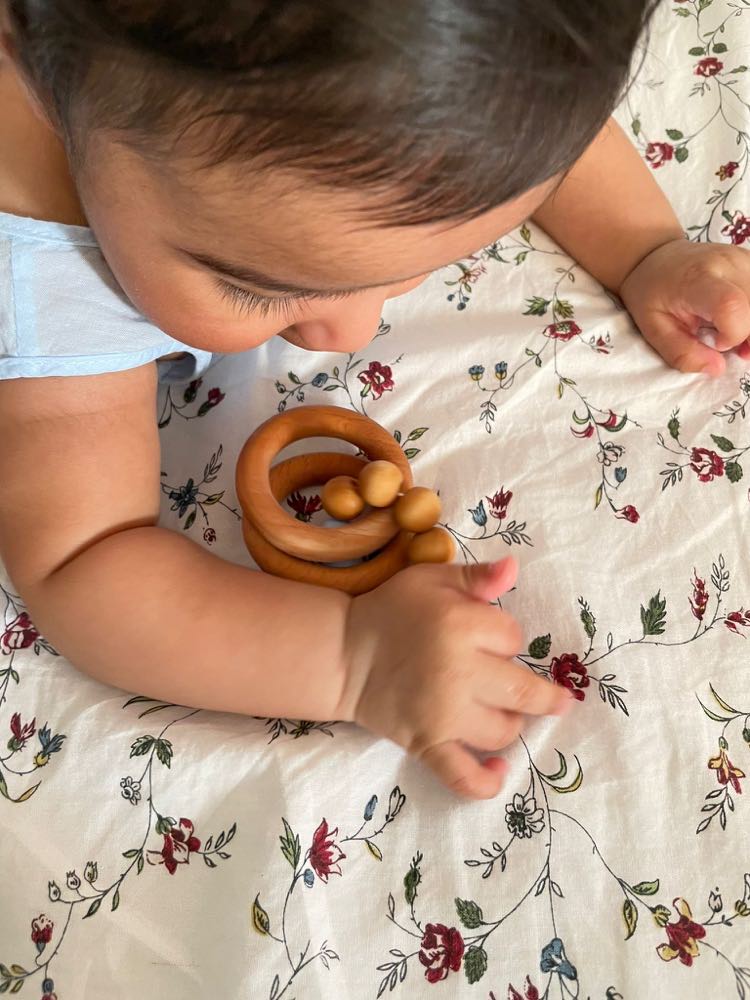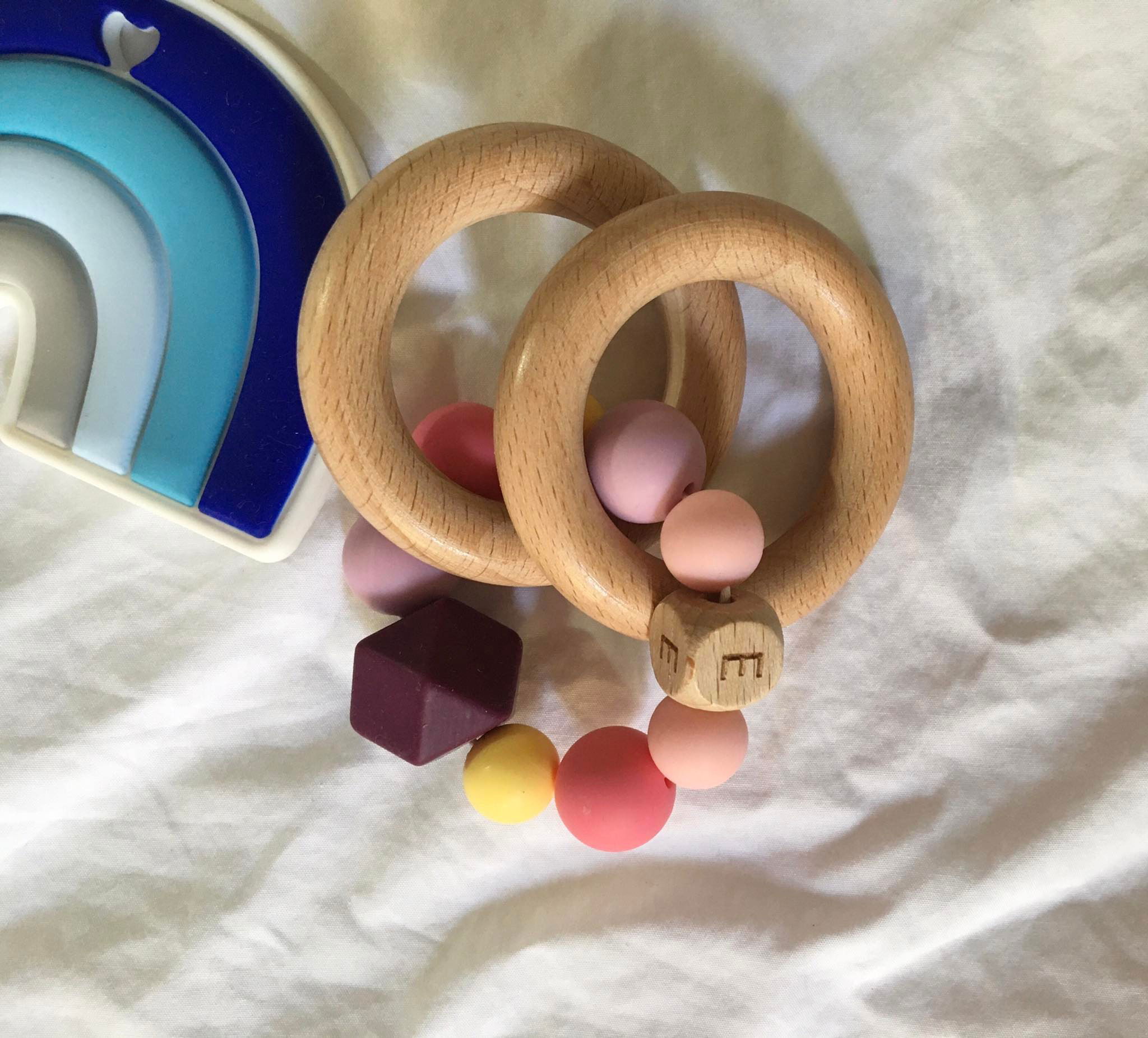Teethers for Babies: Why, When and What kind to get!!!
If your baby has started to put things in their mouth, you’ve probably been looking for a teether or trying to learn what the best teething toys for them would be.
As toymakers, we understand that every toy you give to a newborn has to be carefully vetted. But since the ones that go into their mouths need to be all the more safe, you may have a lot of questions about finding the perfect teether.
Should it be silicone or wood? Soft or hard? What are teething rings? At what age does your child need a teether?
In this blog, we will cover everything you need to know about teethers from when to use them to the best teether material. But before we get there, let’s begin by understanding exactly why babies need teethers.

If your child is a few months old, you may have noticed that they now put everything they can get their hands on into their mouths.
For teething babies, biting into something is a way to explore the sensation and reduce the pain of their swollen gums.
The most common reason for this is that their first few teeth are growing! While this is an exciting milestone in your baby’s development, it can also be a painful time for them. For teething babies, biting into something is a way to explore the sensation and reduce the pain of their swollen gums. Some signs that they are teething may include excessive drooling, constantly being cranky or irritable, having sore gums, or even running a mild temperature. You could even gently run a finger along their gums to feel for any growing teeth.
When their tongues run over objects, they are able to explore their own mouths and learn how to make different sounds. This is a step towards babbling and eventually, speaking.
But that’s not the only reason that children put things into their mouths. When their tongues run over objects, they are able to explore their own mouths and learn how to make different sounds. This is a step towards babbling and eventually, speaking. In both cases, teether toys are good to have as this gives your child something to play with, bite, and explore. The best time to give your child a teether is usually when they are between 4 to 10 months old.

Why we recommend wooden teethers
From plastic to silicone, there are all sorts of teethers available in the market today, each one shinier than the previous!
While teethers and rattle toys do need to attract a child’s attention, keep in mind that most of them are specifically designed to wind up in your child’s mouth. This means that above all else, they have to be safe.
This safety ranges from the materials used to make, paint, and polish the toy to the design and shape of the teether. For instance, a plastic teether filled with shiny, colorful beads may grab your child’s attention, but they can be toxic to put into the mouth as well as a choking hazard.
We believe that the best teethers are made of wood and designed to be light, textured, and easy to hold. Some other reasons we love wooden teethers are:
1. Wooden teethers are durable - Teethers and teething toys made of wood do not break easily. They are durable and with the right care, can last a really long time. All you have to do is make sure it stays sanitary. To clean the teether, wipe it down with a mild soap every now and then and allow it to air dry.
2. They are eco-friendly - As we already discussed, wooden baby teethers are long-lasting so you do not need to keep replacing them. To add to that, they are made of beechwood, ivory, and neem, all of which are found in plenty and are fast-growing plants. This makes these teethers a better choice for the environment too.
3. Wooden teething toys have antibacterial properties - Most plants used in teething toys like neem and beechwood have antibacterial properties which not only make them good for your child to bite into, they can also help soothe aching gums.

4. Wooden toys are safe to take in the mouth - From harmful chemicals like BPA to toxic paints and dyes, plastic teethers may pose a number of risks for your child’s health. Wooden teethers are a surest way to avoid any chemicals. Our teethers at HUGS® are coated with natural beeswax, making them 100% child-safe!
5. Wooden teethers are hard to chew - This may seem counterintuitive, after all, isn’t the point of a teether to be able to chew on it? Not necessary! Children often just need something to put in their mouth and bite. In fact, resting their gums against the hard surface of wood can take the pressure off your baby’s swollen gums.
6. They provide a wonderful sensory experience - Wooden toys are smooth, textured, and wonderful for your baby to touch. Their natural feel, opposed to cold and hard plastic, will provide a delightful play experience! If you are worried about splinters, keep in mind that wooden teethers are made from hardwood so they will be sturdy and smooth.
7. Wooden teethers pave way for imagination - Like all organic and wooden toys, teethers made of wood are also less shiny, distracting, and overwhelming for a baby. The calming natural tones and gentle feel of the toy will help your child focus, develop their curiosity, and engage in quality play!

This lightweight HUGS® teether ring is perfect for your baby to hold in their hands or take in their mouth. The crochet made of organic cotton provides a wonderful tactile experience and the gentle sound of the rattle will soothe your child.

Care Instructions for HUGS® Teething Rings
Teething can be a three-ring circus—so we made a three-ring teether! Conditioned with organic olive oil and beeswax, the double beech wood rings provide a satisfying hard surface for baby's sore gums. A third ring features food grade silicone beads for a gentler gnawing experience. Available in a range of modern colors, this handmade favorite doubles as a rattle that's just the right size for baby to grab and shake. Three cheers for products that multitask!
- Beech wood rings conditioned with organic olive oil and beeswax
- 100% food grade silicone beads
- Free of BPA, PVC, phthalates, lead and cadmium
- Care: Wipe-clean only; do not sterilize or submerge in water
- If wood finish dulls over time, apply a 50/50 mixture of beeswax and food grade oil, then wipe off after letting it soak in


